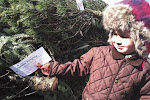It is such an idealistic dream that Charles Schwab even has a commercial with an animated retiring guy lamenting advice about starting a winery in his golden years. While it is a dream of many to do just that, the retiring guy in the commercial does have a point – starting a winery is serious work.
“It is a lot more work than anyone imagines. It is such a romantic idea to start a winery and then reality sets in,” said Jeff Hicks, who helps manage Gervasi Vineyard in Canton. “Be sure to research it as much as possible.”
Hicks speaks from first-hand experience. His father-in-law was retired for two months before he decided to buy some property and start Gervasi Vineyards. The dream has become a spectacular reality, but the business of making wine is more challenging than most people probably imagine.
Though Gervasi is still a young winery, winemaker Andy Codispoti and vineyard manager Sandy Prentice have extensive experience to seamlessly transition from vineyard to vino. The process started with the monumental task of selecting the grape varieties to produce. Type, taste, tolerance to climate and soil type, disease and pest resistance, and numerous other factors went into the decision.
“We have six different varieties growing,” Prentice said. “We’ve chosen varieties that are more disease resistant to require less care.”
There can be drastic differences in the taste of the grapes and performance of the vine based upon climate and soil types.
“Some of the world’s best wines come from the shaliest, poorest looking soil that you can imagine on the side of a hill. Better soil is not necessarily good for wine production grapes,” Prentice said. “The typical Ohio field soil is better than it needs to be for grapes.”
Excessive fruit can reduce the quality of the grapes and the too-rich soils make for potentially over productive plants.
“Grapes, generally speaking, are weeds. They grow like crazy. And since we’re not producing for volume, we’re always assessing plant health to decide how heavily we want the plant to produce,” Prentice said. “There is pruning almost every month from March through mid-September.”
While Prentice is calling the shots in the vineyard, he relies heavily on input from Codispoti to implement the management practices necessary to produce the grapes necessary for the wine.
“We’re interested in a fruit that has a lot of light and air exposure,” Codispoti said. “Air flowing through the vines helps prevent disease and sunlight promotes ripening -- those are key factors in what you’re going to get at the end of the summer when you come to harvest. We work together and discuss things like how much of the canopy we need to remove to expose the grapes to airflow and sunlight.”
As the fruit progresses, the management intensifies.
“When we think that we’re about a month from harvest, I’ll takes samples from the vineyard and bring them in to check the sugar development of the grapes,” Codispoti said. “The closer we get to harvest the more closely we’ll check the sugar. Then, based on the flavor and sugar analysis, we decide that it is time to pick based on what the weather is doing. As we get near harvest, we will check the sugar, acid and pH of the juice also. We are looking to strike a balance between those things and the flavor development of the grape.”
Disease management is critical in the production of quality grapes.
“Disease needs to be avoided because the mold and rot of diseased fruit will affect the flavor profile that you get from the good fruit,” Codispoti said.
The spray program starts early in the spring and continues almost until harvest on a 10- to 14-day spray interval to keep ahead of fungal problems. Pests, including yellow jackets, deer, birds and other insects can also be a challenge. Just a couple of Multicolored Asians Lady Beetles harvested with the grapes can have a dramatic impact on the flavor and quality of the wine.
“In wine making, you have the science part of it and people think making wine is just like making a recipe from a cookbook. There are a lot of subjective decisions that come into play, even before you start the vinification process,” Codispoti said. “You also have to adjust from any shortcomings that you may encounter. Sometimes it isn’t all just chemistry. The chemistry may say that fruit is ripe, but when we taste it we find that is needs a few more days of sunshine.”
With the two men working in concert, Gervasi has been selling wines as quickly as they can be made, but nothing in the world of wine happens all that quickly, Codispoti said. “People ask how much time it takes to make wine and my answer is always, ‘A lot more than you think.’”
So while retiring to start a winery may sound like a great idea, for many, it may be a better idea to just visit one.
For more great Ohio wineries near you, visit tasteohiowines.com.

No comments:
Post a Comment